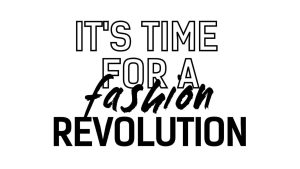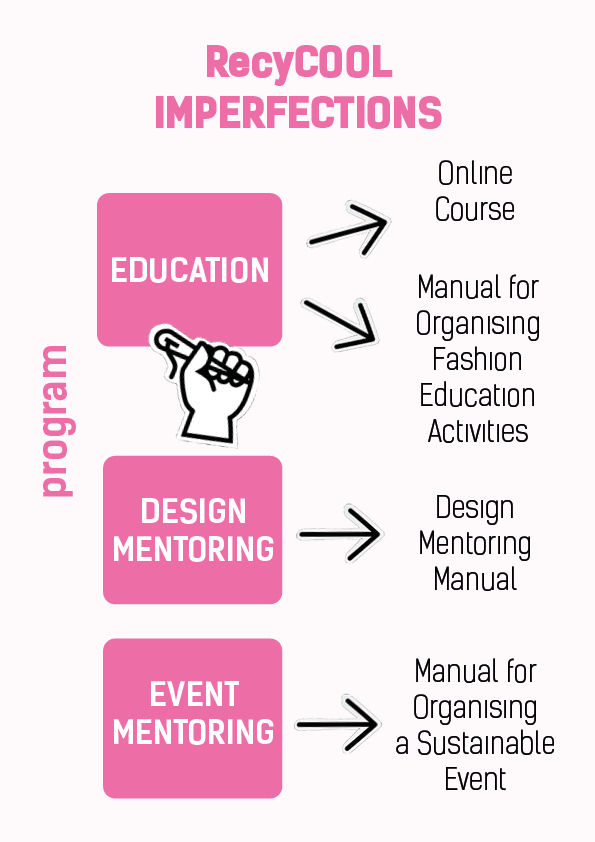Module 1 part b

Uncovering fashion’s value chains
Now we know how to design and wear all kinds of ‘statement fashions’, we need to understand more about the people who make our clothes in factories and fields around the world, and then to imagine the kinds of statements our clothes can make about their lives.
To start this process, let’s carefully read Manifesto point #8. It pictures a time in the future in which we can easily find out who made our clothes, and in which brands and retailers can be held accountable when working conditions are poor.

TASK: Choose one item of clothing that you’re wearing right now. Find the label that says in which country it was made. Then go online to see what you can find about the people who made it for you there. Spend no more than 10 minutes doing this!
QUESTION: What were you able to find? How close do you think we are to Manifesto point #8 now?
This part of the module takes us back to April 2013, to a shocking event in Bangladesh that forever changed the fashion industry and was the spark that began the Fashion Revolution movement. A garment factory complex called the Rana Plaza collapsed and crushed to death over 1,100 people inside who were making clothes for high street brands like Accessorize, Benetton, Joe Fresh, Mango, Matalan, Monsoon, Primark,, Walmart and Zara. As journalists updated their audiences about this unfolding catastrophe over the coming weeks, as they interviewed friends and relatives looking for their loved missing loved ones, and as consumers began looking at their clothes labels to see if they had been made in Bangladesh, the concept of ‘transparency’ and the question ‘who made my clothes?’ came urgently into view, worldwide. Every item of clothing can tell a story about the people who made it, if only we can learn how to find it.
In this part of the course, we take a closer look at the Rana Plaza collapse, then take a closer look at the concept of ‘transparency’ in fashion’s supply chains, and end by thinking what we would say to the people who made our clothes if we had the chance to meet them.
i. The story of the Rana Plaza collapse
TASK: To start, we want you to watch the 10 minute story of the Rana Plaza collapse embedded below. As you watch this, we would like you to take some notes in response to these questions.
QUESTIONS: What were the causes, impacts and aftermaths of this for everyone involved: the factory workers, the factory owners, fashion brands, and their consumers? How does the film identify who and what was responsible for the collapse, and who should be held accountable?
ii. Garment workers’ stories
Just as there are stories that can be told about the Rana Plaza collapse from the outside, there are stories that can be told of it from inside: by the factory workers themselves, their family and friends, and the people in the community who rescued and treated the injured.7 years after the collapse Oxfam Australia made a short film with Shabana who was rescued from the rubble with injuries; and 5 years after the collapse, Fashion Revolution made short films with Sharjahan Selim who was one of the volunteer rescuers, with Dr Abdullah al Mamum who treated injured garment workers at a local hospital, and with Ramin Hasan who was a journalist covering the story there.
TASK: Click the links to the names in the paragraph above to watch these videos. Listen to the way that Shabana, Shajahan, Abdullah and Ramin remember the Rana Plaza collapse, and how it affected their lives and the lives of their workmates, friends and families.
QUESTIONS: What do these four people have to say about the collapse, what it was like at the time to be there, and its effects on their lives many years later? What do their stories teach us, not only about the lives of garment workers, but also about the importance of garment factories to the communities in which they are located? Write down your thoughts. We will return to them later in the course.
iii. The concept of transparency
The more questions we ask about the Rana Plaza collapse, and the people whose lives were so drastically affected by it, the more we can learn about the people who might have made our ‘Made in Bangladesh’ clothes in 2013. The dream of Manifesto point #8 is that this will one day be possible for everything we wear, made anywhere in the world, and without needing a catastrophic event to bring this to public attention.
But Manifesto point #8 is not only about factory workers, but also about who grew or made the raw materials our clothes are made from, who wove its fabric, who drove it in a truck to the docks, who loaded it on a container ship, who worked on that ship, who unloaded it at its destination, who drove it to its distribution centre and store, who bought it (you and me!), who bought it from the second-hand store we gave it to, who took it to the landfill site, etc.. its whole life story, its whole ‘value chain’.
Fashion’s value chains can be extremely complex, and involve thousands of people working in different parts of the world. So, if you are a brand or retailer, it can be difficult to know everything that’s happening in your supply chains, especially when the companies you have asked to make things for you have given that work to other companies you know nothing about (this is called subcontracting and explains why some brands didn’t know their clothes were being made in the Rana Plaza building at the time of its collapse).
The fashion industry is famously opaque. Its lack of transparency allows for the abuse of human and environmental rights in many places, with countries that have little or no regulations to secure these rights being an attractive place for brands wanting to make our clothes more cheaply. When we ask ‘who made my clothes?’, we enter a world of excuses, cover-ups, misleading information and false marketing to find our answers.
So what information can we believe? This is where the concept of transparency is important to understand, and the way that the Fashion Revolution movement has measured it since 2019 in its annual Fashion Transparency Index. There are two tasks and two sets of questions to help us understand this better:
TASK: Read the information in the slideshow below.
QUESTION: What does the word ‘transparency’ mean? How does the Fashion Revolution movement believe that it will lead to positive change in the global fashion industry?
This slideshow introduces the 2021 edition of Fashion Revolution’s Fashion Transparency Index. For the next task we want you to look at the most recent version (2022 at the time of publication). This could take you between 20 and 30 minutes to complete. How does the concept of transparency relate to the clothes you are wearing right now? And why does it matter to know?
TASK:
a) click this link to get to the 2022 Fashion Transparency Index
b) click the search icon (a magnifying glass with an A inside) in the bottom right corner
c) type the brand name of something you are wearing (if you don’t get a result, try another brand and another brand until you do!)
d) when you get a hit, search through the report and write down that brand’s scores on the tables outlining ‘the final scores’, ‘policies and commitments’, ‘governance’, ‘traceability’ and ‘know, show, fix’.
Questions: as you do this, find out what the scores on each table are measuring. Why is ‘governance’ important to transparency, for example? Then think about the scores for your clothing brand. How do they compare with other brands? Which brands have lower and higher scores? Can you find out why? Fashion Revolution argues that transparency leads to accountability which leads to change. What evidence can you find about this in the report?
iv. Reflections
This first part of Module 1 encouraged us to think about the statements we can make with our clothes. This second part has looked at the statements that our clothes don’t make about the people who made them and the lives that they can lead. To finish this module, we would like you to reflect on everything you have read, listened to, and watched, and all of the notes you have made, to do the following:
TASK: Taking the design tips you learned about ‘statement clothing’ in Part a, imagine that you have been asked to design a ‘who made my clothes?’ ‘statement piece’ for the Fashion Revolution movement. Drawing inspiration from the stories and information in Part b above, what comes to mind?
QUESTIONS: what materials would your ‘statement piece’ be made from? Where would it be manufactured and by whom? What would their pay and working conditions be like? How would your design make a statement about this? What facts and/or emotions do you want to design into this? How would your brand (yes, you have a brand!) get a high score in the Fashion Transparency Index?
You can express your ideas in any way you like: writing, sketching, photoshopping, whatever works for you!
